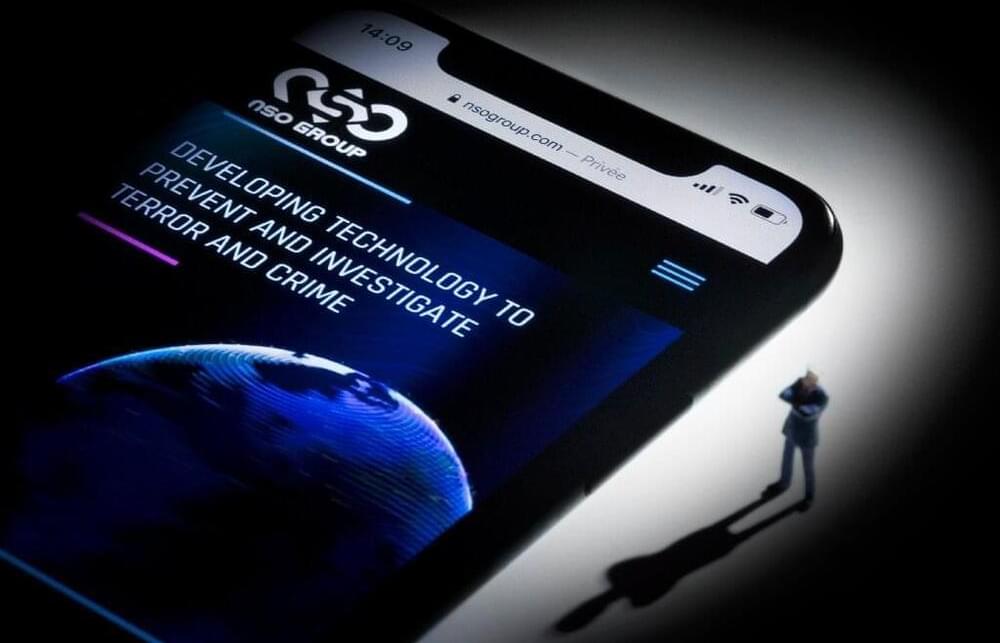One way or another, most phone calls these days involve the internet. Cybersecurity experts say that makes us vulnerable in ways we might not realize.


Following last week’s surprise update, Google is back again with the December Feature Drop for Pixel owners. This time around, Google is bringing some Pixel 6-exclusive features to Pixel 4a 5G “or newer” Pixel devices. https://youtu.be/FmznwhHlCP8 These include the all-new Quick Tap to Snap, making it possible for you to quickly access and send Snaps through Snapchat right from the Lock Screen. Going along with the Quick Tap to Snap functionality, Google has introduced an all-new Pixel-exclusive lens called “Pixel Face”. The company claims that “more Pixel-exclusive Lenses” will arrive in future Feature Drops. In addition to the Feature Drop, this update includes the December Android Security Patch, and includes the following versions for these devices: Pixel 3a (XL): SQ1A.211205.008 Pixel 4 (XL): SQ1A.211205.008 Pixel 4a: SQ1A.211205.008 Pixel 4a (5G): SQ1A.211205.008 Pixel 5: SQ1A.211205.008 Pixel 5a (5G): SQ1A.211205.008 Owners of the Pixel 6 and 6 Pro will begin receiving their December updates “next week”. With last week’s update, Google announced compatibility with the Pixel 6 and 6 Pro to enable a digital car key with select BMW models. After being set up, you can simply place your Pixel on the key reader and press the engine start button. But now, Google is activating the Ultra-Wideband chip found in the Pixel 6 Pro to improve functionality. Not only will this make it easier to use your Pixel 6 Pro as a digital car key, but Google also states this will offer improved Nearby Share compatibility. Another new feature arriving for Pixel devices comes via the Sound Amplifier app. With this Feature Drop, Google is adding a new “Conversation Mode” to Pixel devices. This uses on-device Machine Learning to “help anyone who has a hard time hearing in loud environments by tuning out competing noise.” It works by pointing your phone at the person you want to have a conversation with, pinning the person, and then being able to actually enjoy hearing what they have to say. Google states this is a “sneak peek” version of the feature, but we could end up seeing it arrive for more devices in the future. Now Playing is getting an updated experience, as you’ll not only be able to identify the song with your Pixel but there’s a new music note icon next to the track information. When tapping on the music note, you’ll be able to save it as a favorite, while being able to view and search your history, along with the list of favorite songs. Keeping with the music trend, Google is bringing enhanced bass-level controls to the Pixel Buds A-Series. After the update has arrived, you’ll be able to adjust the slider between-1 and +4, which is “twice the bass range you currently have”. As we’ve seen with previous events, Google is adding a few new wallpapers to celebrate the International Day of Persons with Disabilities. In celebration of International Day of Persons with Disabilities, we collaborated with Dana Kearly, a disabled multidisciplinary artist from Vancouver B.C., to create three beautiful new wallpapers for the Curated Culture collection. Last, but certainly not least, Google is bringing car crash detection support to owners of the Pixel 3 or newer in Taiwan, Italy, and France. With this feature, your phone will check with you in the event that you are in a car accident. If you do not respond within the pre-determined amount of time, your Pixel will contact emergency responders and will provide your location.


Forget about Mark Zuckerberg, Facebook and all the talk about a metaverse. The real future will be a world that is convenient and scary and fantastical — at least according to futurologists. As this year ends, here’s a glimpse at what life might be like … one day.
Facial recognition is already common for phones, but “In 30 years it’s quite possible that you will not use a key or even a credit card. You’ll use your face or iris to make purchases and open locks. Recognition will be that good,” said Martin Ford, author of “Rule of the Robots: How Artificial Intelligence will Transform Everything.”
“The scary thing, though, will be if someone hacks your biometric data. Right now you can call the bank to change your pin or cancel a credit card. But you can’t cancel your biometrics.”

The Israeli spyware maker in the Pegasus surveillance scandal said Friday it was investigating reports the firm’s technology was used to target iPhones of some US diplomats in Africa.
Apple has begun alerting people whose phones were hacked by NSO’s spyware, which essentially turns handsets into pocket spying devices and sparked controversy this year after reportedly being used on activists, journalists and politicians.
“On top of the independent investigation, NSO will cooperate with any relevant government authority and present the full information we will have,” the firm said in a statement.

Circa 2018 c:
Shoes made from stone may sound uncomfortable and something the Flintstones might wear. However, thanks to innovative technology, it is possible to transform ordinary stone into a flexible and paper-thin material. German companies Roxxlyn and Nat-2 decided to work together and use this material to create the world’s first sneakers made from natural stone!
When we think about stone, we think about hard and sturdy material, rather than something flexible. However, Roxxlyn, an expert in creating ultra-light design pieces from stone, developed a technology to use stone to make all kinds of accessories and design pieces, from phone cases to belts, and now sneakers.
The process begins with slicing real stone into thin layers. When these have been extracted, they are flexible and smooth. The pieces are then machined into shape using diamond tools. The layer is engraved on the top surface using a high performance laser. The now created piece is sanded and cleaned from dust and grime by hand. Through a complicated technology, stone slates are made flexible.

In a new study published in Science, researchers have developed a new method for detecting infrared light by changing its frequency to a corresponding frequency in the range of visible light.
Electromagnetic waves have a characteristic frequency and wavelength that are inversely proportional; as one increases, the other decreases. Measured in Hertz (Hz), human eyes can perceive light frequencies between 400 and 750 trillion Hz, or terahertz (THz). Smartphone cameras can detect down to 300 THz, and other detectors used in fiber-optic cables can detect around 200 THz.

OAKLAND/LOS ANGELES, Calif., Dec 2 – Andy Chanley, the afternoon drive host at Southern California’s public radio station 88.5 KCSN, has been a radio DJ for over 32 years. And now, thanks to artificial intelligence technology, his voice will live on simultaneously in many places.
“I may be a robot, but I still love to rock,” says the robot DJ named ANDY, derived from Artificial Neural Disk-JockeY, in Chanley’s voice, during a demonstration for Reuters where the voice was hard to distinguish from a human DJ.
Our phones, speakers and rice cookers have been talking to us for years, but their voices have been robotic. Seattle-based AI startup WellSaid Labs says it has finessed the technology to create over 50 real human voice avatars like ANDY so far, where the producer just needs to type in text to create the narration.

To say we’re at an inflection point of the technological era may be an obvious declaration to some. The opportunities at hand and how various technologies and markets will advance are nuanced, however, though a common theme is emerging. The pace of innovation is moving at a rate previously seen by humankind at only rare points in history. The invention of the printing press and the ascension of the internet come to mind as similar inflection points, but current innovation trends are being driven aggressively by machine learning and artificial intelligence (AI). In fact, AI is empowering rapid technology advances in virtually all areas, from the edge and personal devices, to the data center and even chip design itself.
There is also a self-perpetuating effect at play, because the demand for intelligent machines and automation everywhere is also ramping up, whether you consider driver assist technologies in the automotive industry, recommenders and speech recognition input in phones, or smart home technologies and the IoT. What’s spurring our recent voracious demand for tech is the mere fact that leading-edge OEMs, from big names like Tesla and Apple, to scrappy start-ups, are now beginning to realize great gains in silicon and system-level development beyond the confines of Moore’s Law alone.

Light is an electromagnetic wave: It consists of oscillating electric and magnetic fields propagating through space. Every wave is characterized by its frequency, which refers to the number of oscillations per second, measured in Hertz (Hz). Our eyes can detect frequencies between 400 and 750 trillion Hz (or terahertz, THz), which define the visible spectrum. Light sensors in cell phone cameras can detect frequencies down to 300 THz, while detectors used for internet connections through optical fibers are sensitive to around 200 THz.
At lower frequencies, the energy transported by light isn’t enough to trigger photoreceptors in our eyes and in many other sensors, which is a problem given that there is rich information available at frequencies below 100 THz, the mid-and far–infrared spectrum. For example, a body with surface temperature of 20°C emits infrared light up to 10 THz, which can be “seen” with thermal imaging. Also, chemical and biological substances feature distinct absorption bands in the mid-infrared, meaning that we can identify them remotely and non-destructively by infrared spectroscopy, which has myriads of applications.